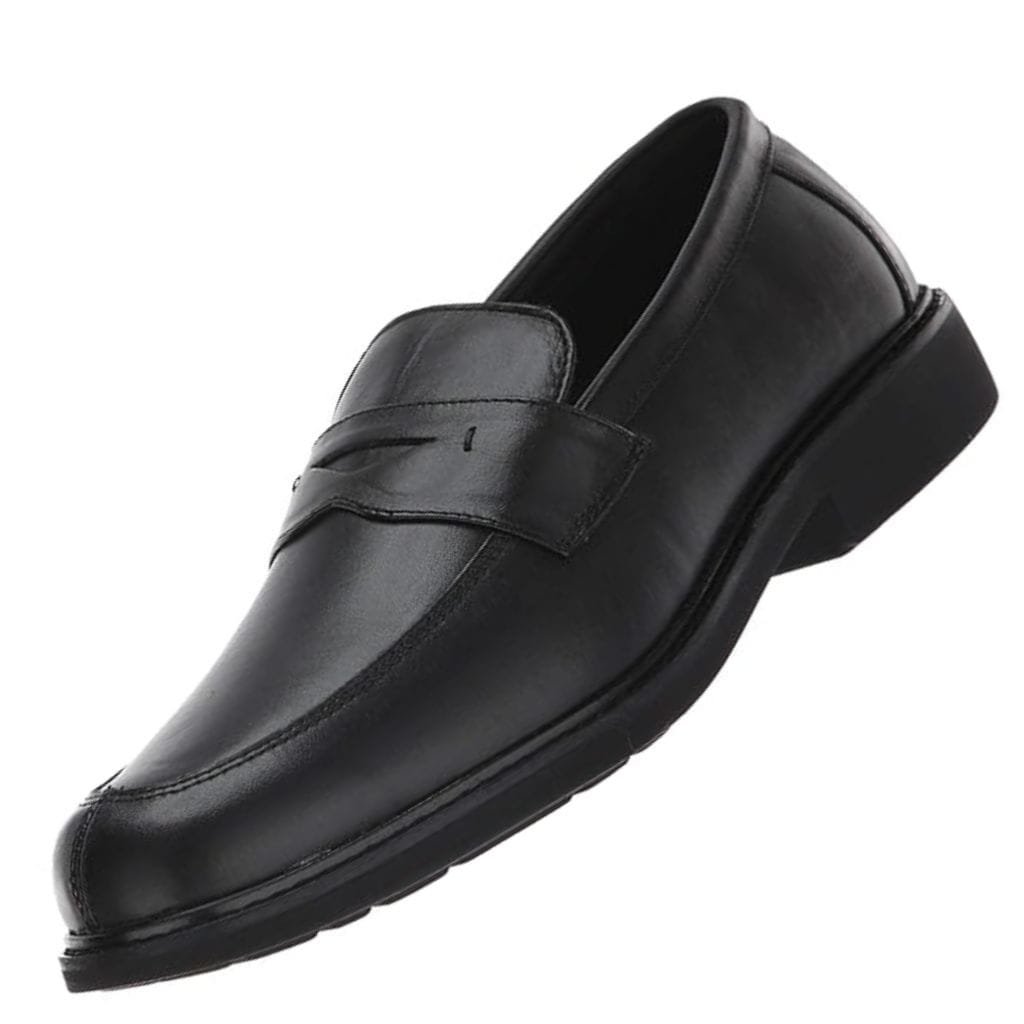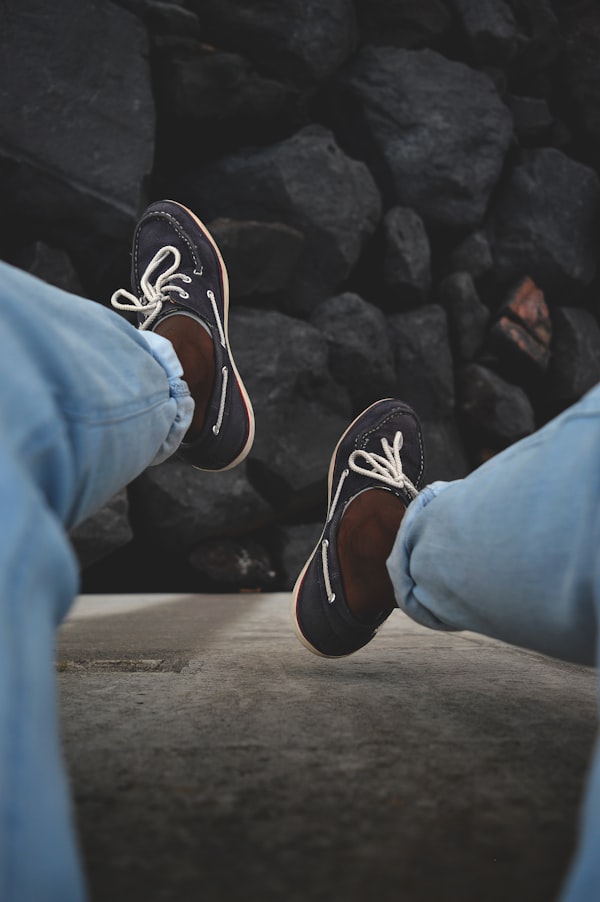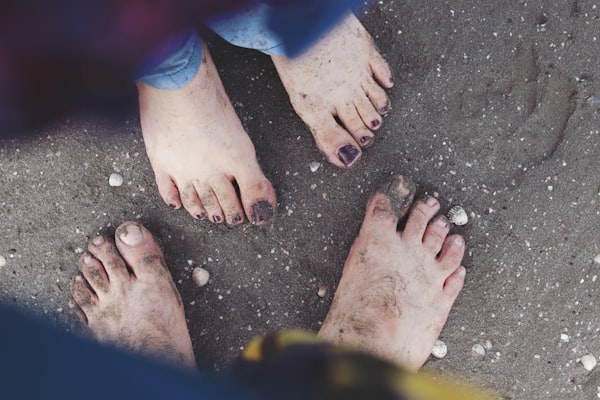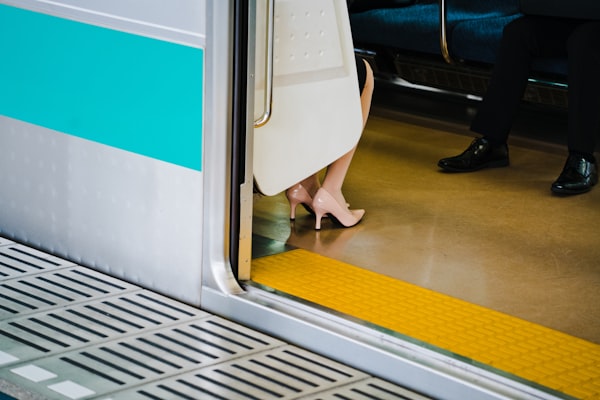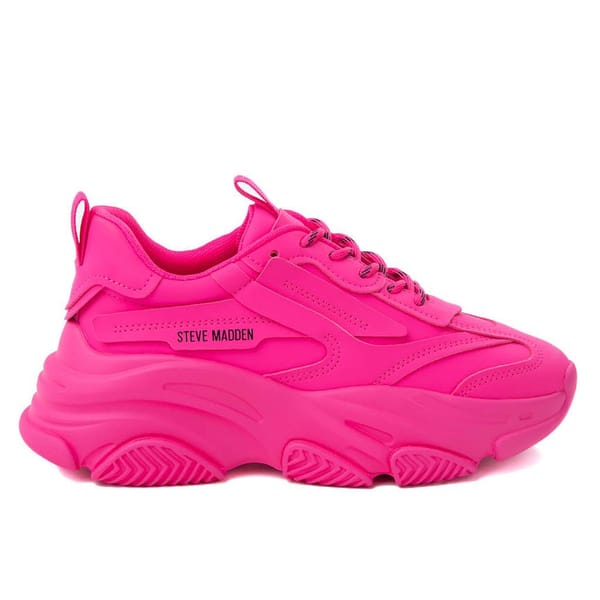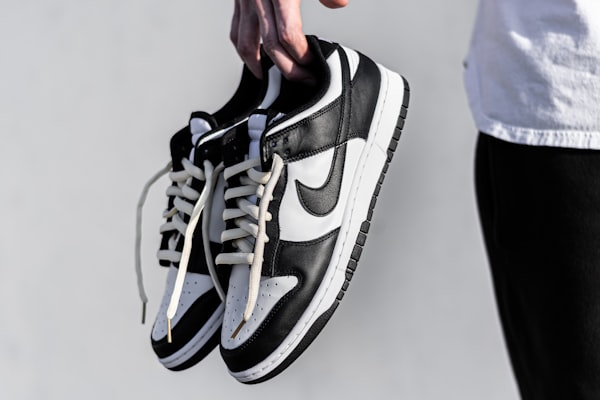Accessory Navicular refers to an extra piece of cartilage or bone located above the arch of the foot. Though it's not a typical part of the foot's anatomy, it often goes unnoticed until symptoms present themselves during adolescence or as a result of injury later in life. This leads to the development of Accessory Navicular Syndrome (ANS).

ANS can result in chronic pain and discomfort, particularly after physical activity. While custom orthotics can provide relief, the cost and multiple appointments with a podiatrist for a proper fit may not be feasible for everyone.
That's why we've taken the time to research and compile a list of shoes that offer relief from ANS pain and can be delivered directly to your door in just a few days. No need to stress about expensive appointments or getting the perfect fit - our list has you covered.
How We Choose
Finding the right shoes for Accessory Navicular Syndrome (ANS) can be challenging with so many options.
To simplify the process, we conducted extensive research and consulted top industry experts to identify the key factors necessary for ANS symptom relief. Our criteria included fit, features, brand reputation, and cost.
After thoroughly reviewing hundreds of brands and models, we narrowed the list to the best shoes that provide comfort and alleviate ANS symptoms. Our comprehensive guide includes details on why we selected each shoe and the essential information to consider.
With our hard work, you don't have to stress about finding shoes that won't hurt your feet or worsen your condition.
Our Top Picks
Let's dive into the specifics of what to look for in a shoe later, but first, let's explore the shoes we've selected for Accessory Navicular Syndrome (ANS) sufferers.
When choosing a shoe, it's crucial to remember the purpose for which you'll be using them. Different brands put a lot of effort into creating shoes for specific activities.
That's why our choices cater to various situations and activities you may have in mind. Regardless of the occasion, we have you covered.
*As an Amazon Associate, we earn a small commission from qualifying purchases at no cost to you.
Why It's FrontPage Worthy
These lightweight boat shoes reduce foot fatigue and strain, crucial for ANS sufferers. They are designed with a slip-on style, minimizing the need to bend and stress the foot during wear. Their construction offers stability and comfort, crucial for managing ANS discomfort, and the breathable material is ideal for maintaining foot health in various environments.
What You Should Know
- Brand Excellence: Margaritaville footwear is known for combining comfort with a laid-back style, reflecting the brand's beach-inspired lifestyle. Their focus on relaxed, casual designs that resonate with fans of the Margaritaville lifestyle contributes to their popularity.
- Materials: Made with synthetic materials designed for durability and ease of maintenance.
- Sizes and Widths: Offered in sizes 8 through 13, including half sizes.
- Colors and Finishes: Available in three colors.
Why It's FrontPage Worthy
These slip-on loafers are tailored to provide extra cushioning and pain relief. The loafers incorporate arch support, which is crucial for alleviating stress on the accessory navicular bone. Additionally, the shoes are constructed from canvas, a material known for its durability and comfort. These loafers combine orthopedic functionality with a casual, versatile style, making them suitable for various everyday activities.
What You Should Know
- Brand Excellence: OrthoComfoot is recognized for its orthopedic and ergonomic shoe designs, specifically targeting foot-related issues. They are praised for combining comfort with orthopedic benefits, making them ideal for individuals with various foot conditions.
- Materials: Made with a canvas upper, providing breathability and comfort. They also feature an EVA midsole and a rubber outsole for excellent traction, stability, and a lightweight feel.
- Sizes and Widths: Offered in sizes 7 through 14, including half sizes.
- Colors and Finishes: Available in a wide range of colors and patterns, offering versatility for different style preferences.
Why It's FrontPage Worthy
This sneaker boasts a high-rebound cushioning with Skechers Air Cooled Goga Mat insole, providing exceptional comfort and support, crucial for ANS management. The sneaker's lightweight, responsive ULTRA GO cushioning and high-rebound ULTRA PILLARS enhance walking comfort and reduce foot fatigue. Furthermore, its soft woven mesh fabric upper ensures a seamless and comfortable fit, while the dual-side elastic panels offer flexibility and ease of wear, minimizing stress on the navicular area.
What You Should Know
- Brand Excellence: Skechers is renowned for its innovative walking technology, presenting the GOwalk Evolution Ultra-Impeccable as a leader in combining comfort with performance. The brand is celebrated for its lightweight, responsive cushioning and high-rebound support, making it a top choice for walking shoes.
- Materials: Constructed with a soft woven mesh fabric upper, ensuring breathability and a comfortable fit. The shoe also features a rubber outsole for durability and a polyester lining for additional comfort.
- Sizes and Widths: Offered in sizes 7 through 16, including half sizes, and two width options, including wide width.
- Colors and Finishes: Available in a wide range of colors, combining style with functionality.
Why It's FrontPage Worthy
These mules are particularly suitable for individuals with ANS due to their orthopedic insole and ergonomic soles, which offer pain relief for various foot conditions. They feature a roomy forefoot area and stretch upper, making them friendly for wide feet and providing stress-free toe movement. The insoles are anatomically designed with orthotics, and the midsole is made of lightweight EVA foam, ensuring both comfort and support. Additionally, the outsoles are made of premium rubber, and the upper part of the slipper is constructed with canvas and soft cotton, offering durability and comfort.
What You Should Know
- Brand Excellence: WalkHero is known for its focus on orthopedic insoles and ergonomic soles, offering relief for foot and lower limb pain, making it an excellent choice for foot health and comfort.
- Materials: Made with canvas and soft cotton uppers, lightweight EVA foam midsoles, premium rubber outsoles, and anatomical orthotic insoles, combining durability and comfort.
- Sizes and Widths: Offered in sizes 8 to 14, including half sizes, and two width options, including wide width.
- Colors and Finishes: Available in various colors neutral/natural colors, appealing to many style preferences.
Why It's FrontPage Worthy
This athletic shoe’s cushioned midsole provides excellent shock absorption, reducing stress during movement. The lightweight design and breathable upper material ensure comfort and reduce overheating, a common issue for ANS sufferers. The supportive heel construction and secure lacing system also offer stability, minimizing the risk of falls or injuries that can aggravate ANS symptoms. Overall, this shoe combines comfort, support, and safety, making it an ideal choice for those with ANS-related sensitivities.
What You Should Know
- Brand Excellence: Adidas is known for its high-quality sports gear, combining comfort with technology. The Kaptir 2.0 is celebrated for its blend of style and functionality, making it ideal for running and everyday use.
- Materials: Featuring a knit upper, ensuring breathability and comfort. It also includes a sculpted Cloudfoam midsole for unbeatable comfort and a synthetic outsole for durability and traction.
- Sizes and Widths: Offered in sizes 6.5 through 15, including half sizes.
- Colors and Finishes: Available in a wide range of colors, offering versatility in style preferences.
Why It's FrontPage Worthy
This dress shoe’s double-depth design and removable polyurethane footbed with maximum arch build-up provide crucial arch support and accommodate custom orthotics, addressing the unique foot shape and comfort needs of those with ANS. The extended medial heel stabilizer enhances stability, reducing strain on the navicular area. Additionally, the shoe's flexible, lightweight polyurethane outsole and soft, foam-padded tongue and collar ensure comfortable, supportive wear. These therapeutic features and stylish appearance make this dress shoe an ideal choice for those with ANS.
What You Should Know
- Brand Excellence: Drew Shoe is renowned for combining style and therapeutic benefits. Their shoes are often favored for addressing various foot conditions, highlighting their focus on orthopedic and therapeutic designs.
- Materials: Crafted with a leather upper and features a flexible, lightweight polyurethane outsole. The interior includes leather and Drilex® linings with AEGIS Microbe Shield for odor and stain control, ensuring both durability and comfort.
- Sizes and Widths: Offered in sizes 7 through 16, including half size, and five widths to accommodate different foot shapes.
- Colors and Finishes: Available in classic black and rich brown leather, providing sleek and versatile looks suitable for both casual and dressier occasions.
Why It’s FrontPage Worthy
This loafer’s extra depth design and removable polyurethane footbed with built-up arch support cater to the unique foot shape and comfort requirements of those with ANS. The shoe includes a flexible, lightweight polyurethane outsole and an extended medial heel stabilizer, providing stability and reducing strain on the navicular area. The leather and Drilex® lining with AEGIS Microbe Shield also ensure a healthy foot environment. The Gentleman’s Heel Notch and tempered steel shank further enhance support and stability, making the Essex an ideal choice for those with ANS.
What You Should Know
- Brand Excellence: Drew Shoe is acclaimed for its combination of therapeutic and orthopedic features in stylish designs. Their focus on addressing specific foot conditions makes them an excellent brand for those needing specialized foot care.
- Materials: Made from smooth leather uppers, and features leather and Drilex lining with AEGIS Microbe Shield. The outsole is crafted from flexible, lightweight polyurethane, ensuring both comfort and durability.
- Sizes and Widths: Offered in sizes 7 through 16, including half size, and five widths to accommodate different foot shapes.
- Colors and Finishes: Available in classic black and burgundy. These colors add to the shoe's adaptability, making it suitable for various occasions.
Why It's FrontPage Worthy
These boots' sturdy ground-gripping TPR outsole provides essential traction and support, reducing strain on the arch. Their double insoles, which retain heat, also facilitate comfortable movement and cushioning, crucial for ANS sufferers. Furthermore, the antimicrobial treatment helps in preventing infections, a concern for those with foot sensitivities. The boots' 1.5-inch heel and sleek design ensure both style and comfort, while the twin zippers allow for easy adjustability, accommodating the unique shape and needs of feet affected by Accessory Navicular Syndrome.
What You Should Know
- Brand Excellence: Propet is known for its commitment to orthotic-friendly and diabetic-friendly footwear. Their focus on specialized needs, such as cold weather resilience and protective treatments like Scotchgard™, underlines their dedication to quality and functionality.
- Materials: Made from smooth leather treated with Scotchgard™ for water resistance. They feature a soft faux fur lining for warmth and comfort.
- Sizes and Widths: Offered in sizes 8 through 15, and four widths to accommodate different foot shapes.
- Colors and Finishes: Available in black and brown, suitable for various occasions and outfits.
Why It's FrontPage Worthy
This boot's rigid heel counter and removable insole, which allows for custom orthotics, provide essential support and cushioning, addressing the unique foot shape and comfort requirements of those with ANS. The waterproof construction keeps moisture out, crucial for maintaining a healthy foot environment. Its lightweight, cushioned EVA midsole and slip-resistant rubber outsole offer stability and reduce strain on the navicular area, while the puncture-resistant composite materials embedded in the footbed add an extra layer of protection.
What You Should Know
- Brand Excellence: Propet is recognized for its commitment to comfort, quality, and functionality in footwear. They specialize in shoes for special care feet, emphasizing their focus on foot health and all-day comfort.
- Materials: Featuring a durable upper made from a combination of leather and mesh, along with TPU welding. This construction ensures both breathability and robustness.
- Sizes and Widths: Offered in sizes 8 through 15, and four widths to accommodate different foot shapes.
- Colors and Finishes: Available in a practical and versatile Dark Grey/Black color, making it suitable for various work environments and uniform requirements.
Why It's FrontPage Worthy
This slide is well-suited for individuals with ANS due to its supportive and stabilizing features. These sandals boast a wide base, offering ample support and stability, crucial for those with this condition. The durable PU outsoles help reduce foot fatigue, a common issue in ANS. The truTECH® cushioning at the heel also provides shock absorption and promotes a confident, easy stride. The combination of these features, along with the sandal’s easy-to-clean leather uppers and moisture-wicking mesh linings, makes it a comfortable and practical choice for sufferers of ANS.
What You Should Know
- Brand Excellence: Rockport is recognized for its comfortable and instantly recognizable footwear. They focus on slip-on comfort and offer a range of shoes, including sandals, Oxfords, and more, emphasizing their commitment to both comfort and style.
- Materials: Featuring durable leather uppers that are easy to clean and maintain, extending the product's life. It also has mesh linings for enhanced breathability.
- Sizes and Widths: Offered in sizes 6.5 through 15, including half sizes, and two width options, including wide width.
- Colors and Finishes: Available in colors two brown shades and black, classic and versatile suitable for various occasions.
Why It's FrontPage Worthy
This sandal’s stitch-down construction and wide base provide ample support and stability, essential for ANS sufferers. The durable PU outsoles reduce foot fatigue, and the mesh linings enhance breathability, keeping feet cool. Additionally, the truTECH® technology offers lightweight shock absorption, and radial construction adds extra cushioning and flexibility to the sole. The leather uppers are easy to clean, extending the shoe's life, and the adjustable hook-and-loop closures ensure a snug fit, making these sandals both comfortable and practical for ANS sufferers.
What You Should Know
- Brand Excellence: Rockport is renowned for its comfortable and classic footwear. They are known for slip-on comfort and feature a range of styles, including sandals and Oxfords, showcasing their commitment to both comfort and style.
- Materials: Made with mesh linings for enhanced breathability, leather uppers for durability, and a PU outsole for shock absorption.
- Sizes and Widths: Offered in sizes 6.5 through 15, including half sizes, and two width options, including wide width.
- Colors and Finishes: Available in black and brown, two classic colors suitable for many occasions.
Why It's FrontPage Worthy
These slippers have a suede upper and a technical faux-shearling covered EVA footbed, providing both comfort and support. The durable rubber outsole adds stability and reduces the risk of slips, important for those with foot conditions. The slippers also feature Vionic's Vio-Motion Support, offering essential arch support and helping maintain alignment, which benefits those with ANS. The easy slip-on style with great toe volume also ensures comfort and convenience for daily wear.
What You Should Know
- Brand Excellence: Vionic is known for its supportive technology and orthotic footwear. They offer Vio-Motion Support, and their products are often APMA (American Podiatric Medical Association) approved/accepted, making them an excellent brand for those needing supportive and comfortable footwear.
- Materials: Made from suede for the upper, with a technical faux-shearling covered EVA footbed and a durable rubber outsole.
- Sizes and Widths: Offered in sizes 7 through 14, including half sizes.
- Colors and Finishes: Available in 4 neutral colors, offering a range of options to suit different preferences.
The Criteria We Used
As previously stated, we identified the vital factors in selecting shoes that offer relief from Accessory Navicular Syndrome symptoms. These factors fall into four categories: fit, features, brand reputation, and cost. Let's take a closer look at the criteria that we used to make our final choices.
1. Fit
Shoes that fit well are crucial for individuals with Accessory Navicular Syndrome as they can help alleviate symptoms and reduce the risk of further injury.
Wearing shoes that do not fit properly can lead to pain, discomfort, poor posture and gait, and worsen ANS symptoms. Conversely, shoes that fit correctly distribute weight evenly across the foot, reduce pressure on specific areas and protect the foot from harm.
Hence, it's critical to find shoes that are comfortable and provide adequate support. Our research evaluated ten factors when considering brands and shoe models.
- Length: Ensure that the shoe matches the size of your foot by measuring it and trying the shoe on. Adequate space in the toe box is crucial to prevent discomfort or squeezing.
- Width: Ensure that the shoe fits comfortably around the width of your foot. Avoid shoes too tight or too loose in the area of the ball of the foot, heel, or arch.
- Contour of The Footbed: The shape of the footbed should be such that it conforms to the natural contours of your foot, providing support and allowing for natural movement of the foot.
- Arch Support: Reduce stress on the feet and distribute weight evenly, with shoes providing proper arch support.
- Toe Box Sizing: The toe box should provide enough space for your toes to spread out and move freely, with adequate ventilation for comfort.
- Heel Height and Heel Cup: The heel height of the shoes should be suitable for its purpose and comfortable for you. The heel cup should be deep to maintain stability in the heel position and align the heel with the ankle, knee, and hips.
- Heel Slippage: Shoes should fit snugly and securely around the heel, preventing slipping or sliding for a secure and stable fit.
- Ankle Support: Shoes with adequate ankle support help keep the foot secure and appropriately aligned. Consider shoes with a higher ankle or straps to provide additional stability to the ankle.
- Traction: Shoes should have a solid grip to avoid slips and falls. Search for shoes with a non-slippery sole or outsole for added stability.
- Comfort: Shoes must be comfortable without causing any pain, pinching, rubbing, or sweating. Comfort is crucial to avoid irritating the accessory navicular bone, which can worsen ANS symptoms.

2. Features
For individuals with Accessory Navicular Syndrome, the right shoes are crucial in managing the symptoms and preventing further damage.
The right shoes can distribute weight evenly, alleviate pressure on the accessory navicular bones, and provide long-lasting comfort.

Choosing the right shoes is essential for ANS sufferers. Here are the five features we examined while researching our picks of the best shoes for ANS.
- Support: The shoe should provide a stable base for your foot, with a sturdy heel and solid arch support. This helps distribute your weight evenly and reduce stress on the accessory navicular bone, promoting comfort and reducing the risk of injury.
- Cushioning: Adequate cushioning is essential for those with Accessory Navicular Syndrome, as it helps protect the feet from impact and reduces stress on the accessory navicular bone. Look for shoes with a well-padded heel, toe box, and insole.
- Flexibility: The shoe's sole should offer flexibility to facilitate natural foot movement, thereby reducing stress on the bones and tendons in the foot. Opt for shoes with a flexible sole instead of a stiff one.
- Closure: Shoes with laces are recommended for individuals with Accessory Navicular Syndrome, as they can be tightened or loosened for a customized fit. Avoid slip-on shoes as they may not offer enough support.
- Material: Opt for leather shoes, which offer robust support and allow for proper air circulation. Avoid shoes made from synthetic materials, which may not be as long-lasting or breathable.

3. Brand Reputation
When buying shoes for Accessory Navicular Syndrome (ANS), brand reputation is crucial. A reputable brand is often a sign of quality and comfort in the shoes, ensuring they provide the necessary support for people with ANS.
Well-known shoe brands focusing on ANS may have put in the research and development to create shoes with extra cushioning, stability, and arch support, aimed at reducing pain and discomfort associated with the condition.
In contrast, shoes from lesser-known brands may not offer the level of support and comfort required for ANS, leading to increased pain, discomfort, and worsening symptoms.
For this reason, we choose brands with a proven track record in producing shoes that cater to the specific needs of those with ANS.
4. Cost
The cost of shoes for Accessory Navicular Syndrome (ANS) is an essential consideration because it can affect the quality and efficacy of the shoes. Shoes designed to relieve ANS symptoms typically cost more than regular shoes due to the specialized materials and technology used in their construction.
Investing in high-quality shoes, however, can be worth the cost as it can help alleviate pain and prevent the worsening of symptoms associated with ANS. In addition, shoes equipped with ample cushioning, stability, and arch support can help distribute weight evenly, relieve pressure on the affected areas, and provide the necessary support to the feet.
On the other hand, poorly made, low-priced shoes can worsen ANS symptoms as they may not provide adequate support and can put additional strain on the affected areas. This can lead to increased pain, discomfort, and the possibility of further injury.
Our research aimed to find supportive, comfortable shoes that meet the specific needs of ANS sufferers without sacrificing quality for the price.
Tips from Our Editors
- Keep your feet comfortable by wearing socks made of moisture-wicking materials, no matter what type of shoes you wear.
- If you have high arches, look for shoes with a deep heel cup for added stability.
- Counter flat feet by wearing shoes with a raised arch and reinforced heel for better weight distribution.
- Don't count on shoes stretching to fit your feet over time. While certain materials like leather may adjust to the shape of your feet, it's not a guarantee. Wearing shoes that are too small and hoping they will stretch can cause discomfort, pain, or injury.
- Go for water-resistant shoes instead of waterproof shoes, as the breathability of waterproof materials is not yet scientifically proven.
- If you require high-tops for a specific activity, switch to low-tops after the action has ended. Wearing high-tops for prolonged periods can limit the Achilles tendon and increase stress on the joint.
- Even the best shoes can't handle excessive walking or exercise, putting extra stress on all foot structures, including the accessory navicular and posterior tibial tendon. So be sure to take frequent breaks during physically demanding activities.
FAQs
1. Why do people get Accessory Navicular Syndrome?
Accessory Navicular Syndrome (ANS) can be present at birth or develop over time. The most common causes are:
Congenital deformity: Some people are born with a more prominent navicular bone, which can cause irritation and lead to Accessory Navicular Syndrome.
Overuse: Repetitive physical activities such as running, jumping, or dancing can stress the navicular bone and lead to ANS.
Trauma: An injury or impact to the foot can cause inflammation or damage to the navicular bone, leading to ANS.
Flat feet: People with flat feet have a higher risk of developing ANS as the increased stress on the foot can cause damage to the navicular bone.
Rheumatoid arthritis: Inflammation caused by rheumatoid arthritis can affect the navicular bone and lead to ANS.
2. Can wearing the wrong type of shoe cause Accessory Navicular Syndrome?
Wearing the wrong type of shoes can increase the risk of developing Accessory Navicular Syndrome (ANS) or worsen existing symptoms. For example, shoes that do not provide adequate support or are too tight can cause irritation and inflammation of the navicular bone. High-heeled shoes or shoes with a narrow toe box can also put excessive pressure on the midfoot, leading to ANS.
It's essential to wear well-fitting shoes, provide adequate support, and are appropriate for the activity you are participating in. Also, avoid wearing the same shoes daily and alternate between different types of shoes to reduce the risk of developing ANS.
3. Do athletic shoes ease Accessory Navicular Syndrome symptoms?
Athletic shoes can help ease Accessory Navicular Syndrome (ANS) symptoms when designed to provide adequate support for the foot. Athletic shoes with a deep heel cup and a raised arch can help keep the heel in a stable position, reducing stress on the navicular bone. Shoes with shock-absorbing features can also help minimize the impact on the midfoot, reducing pain and inflammation associated with ANS.
It's crucial to choose athletic shoes that are appropriate for the activity you are participating in, and that fit well. Shoes that are too tight or have a narrow toe box can put excessive pressure on the midfoot, leading to ANS.
4. Is walking good for Accessory Navicular Syndrome?
Walking can benefit individuals with Accessory Navicular Syndrome (ANS) if done in a controlled manner and with the proper footwear. Gentle walking can help improve circulation, maintain the range of motion in the foot, and strengthen the muscles in the foot.
However, excessive walking or exercise that places an unreasonable load through the structures in the foot, including the posterior tibial tendon and the accessory navicular, can exacerbate ANS symptoms. Therefore, choosing well-fitting shoes that provide adequate support and are appropriate for the activity you are participating in is essential.
Speaking to a doctor before starting any exercise program is recommended, as they can provide personalized recommendations based on the severity of your ANS and overall health.
5. Do orthotics make Accessory Navicular Syndrome symptoms better or worse?
Orthotics, or shoe inserts, can affect Accessory Navicular Syndrome (ANS) differently depending on the individual's specific condition and needs. While orthotics can help redistribute weight, provide cushioning, and stabilize the foot, they can also exacerbate symptoms if not properly designed or fit.
In some cases, orthotics can help alleviate pain and discomfort caused by ANS by redistributing weight and supporting the accessory navicular and surrounding structures in the foot. However, if orthotics are too rigid or don't fit properly, they can put additional stress on the accessory navicular, exacerbating symptoms and potentially worsening the condition.
Orthotics can benefit some people with ANS, but they can also worsen the condition if not properly designed or fit. Consult a medical professional to determine the best approach for managing your ANS and reducing symptoms.
On a Final Note
ANS can be a painful and debilitating condition for those who suffer from it.
The good news is that shoes designed explicitly for ANS can relieve symptoms and are a more cost-effective and convenient alternative to orthotics.
With the helpful tips and information we have shared, you can find the perfect pair of shoes to address your ANS needs without visiting a podiatrist.
Related Articles











